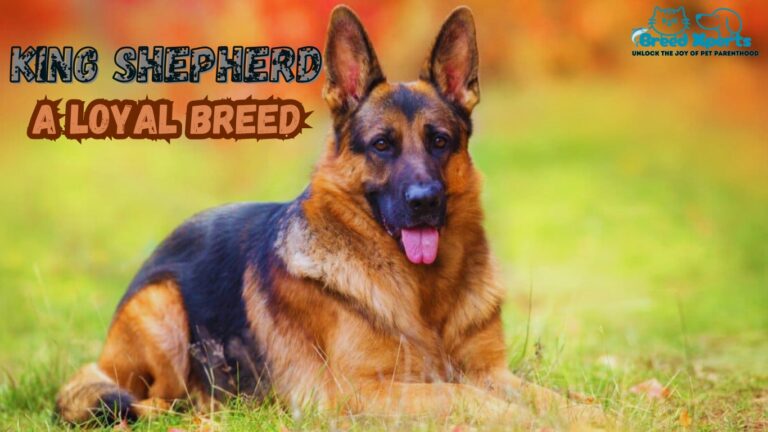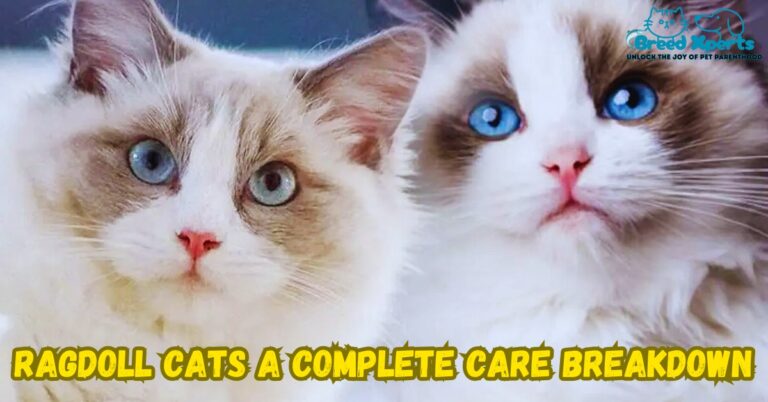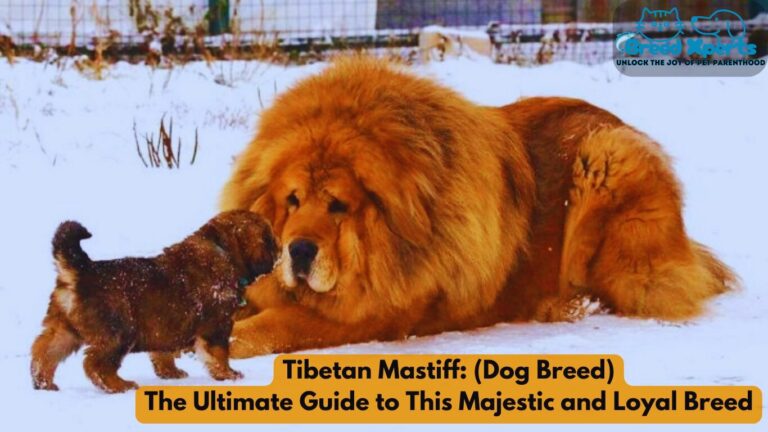Why Are Persian Cats So Popular? 10 Surprising Things You Didn’t Know (Full Guide)
The Persian is one of the most popular breeds of cats enjoyed by people. People love it for its attractive long coat and round face appearance, as well as its relatively gentle nature. These cats carry a history of being kept behind the throne once upon a time. They are calm, friendly cats that love having their owners on their side; they are exactly the opposite when compared to action cats that play around. End.
Persian cats need to be groomed every day since their fur can get knotted very easily. Their flat face often leads to tearing, which should be cleaned every day. These cats do not make noise often, only occasionally meowing; however, they love to follow their owners around.
Persians come in all colors of the rainbow – white, black, gold, and silver. Being charming, friendly, and loving, Persian cats are fantastic companions for a family or an enthusiast of cats. Having a Persian cat is equivalent to being accompanied by your own cuddly, fluffy, and loving companion for life!
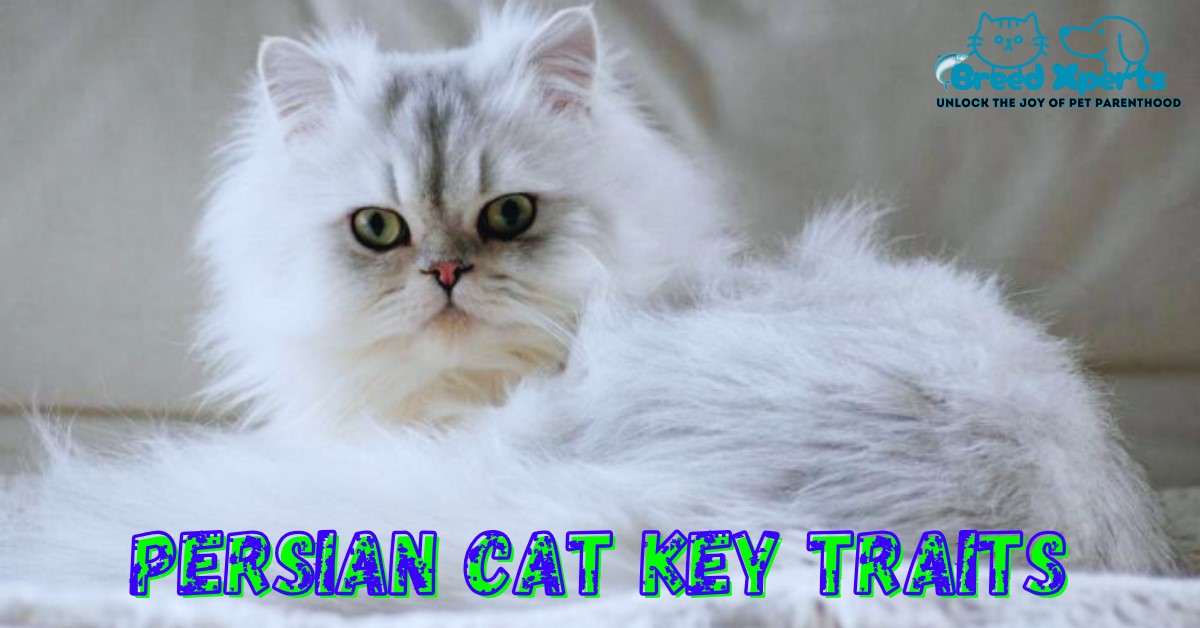
Key Traits:
- Group: Long-haired
- Height: 10–15 inches (25–38 cm)
- Weight: 7–12 pounds (3–5.5 kg)
- Life Span: 12–17 years
- Personality/Temperament: Calm, gentle, affectionate, and quiet
- Energy Level: Low to moderate
- Coat: Long, thick, and silky
- Coat Colors: White, black, blue, cream, red, chocolate, lilac, silver, golden, bi-color, tabby, calico, Himalayan, and more
- Eye Colors: Blue, copper, green, hazel, or odd-eyed (one blue, one copper)
- Grooming Needs: High (daily brushing and regular eye cleaning)
- Shedding: Heavy
- Vocalization: Soft and quiet
- Good for: Indoor living, apartment life, families, and single owners
- Common Health Issues: Breathing problems (brachycephalic face), eye drainage, dental issues, kidney disease
Breed Overview
The Persian cat is such a lovely and popular breed, known for its long coat of sleek fur and rounded face. These cats have a quiet, gentle temperament that makes them perfect for both families and single owners. They are enjoying relaxing at home and love to be pampered by the owner. Unlike active breeds, Persian cats prefer tranquil settings in which they can comfortably rest.
Persian cats are available in several colors, which include white, black, blue, and gold. Their big, expressive eyes can be either blue, copper, or both. They are dense-furred cats that require daily grooming to prevent tangles and matting. Their flat faces can result in respiratory and eye problems; therefore, proper cleaning is very important for them.
These cats have a low to moderate energy level and require minimal exercise. These gentle and affectionate cats are a fan favorite, often following their owners around. Persians make great indoor companions, as they enjoy cozy atmospheres and love people. Having a Persian means having a sweet, gentle friend for many years!
Why Are Persian Cats So Popular?
Persian cats would probably be amongst the most revered and recognized around the globe, with their lovely fur, tender personalities, as well as imperial appearance. There are 10 unknown facts which you didn’t know about the Persian cat breeds:

10 Surprising Things You Didn’t Know
They Have an Ancient Royal Heritage
Persian cats originated in ancient Persia, now known as Iran, where they were immensely favored by kings and noblemen for years. They traveled to Europe in the 1600s, and at once they became a symbol of opulence.
Persians Were the First Pedigreed Cats
One of the first recognized breeds at a cat show by the start of the 19th century Persian cats were those that were used for exhibition back in 1871 during the first exhibition that was held for cats at Crystal Palace in London.
They Require High-Maintenance Grooming
Long thick fur on a Persian cat has to be combed every day to avoid becoming matted. These cats also require frequent grooming to ensure good looks and reduced shedding.
They Have a Unique “Doll Face” and “Peke Face”
The two face shapes that determine Persian cats include
- Doll face: They tend to look rather old-fashioned; the nose has a rather drawn-out form. More life-like features define their appearance.
- Peke Face: A flat-faced breed, the name is based on the comparison with the Pekingese breed, and is characterized by the depressed nose and round eyes.
They Are Known for Their Gentle and Affectionate Personality
Persians are sweet, gentle, and fond cats who enjoy lounging about rather than climbing or being overactive. Persians are considered to be faithful and enjoy the company of their masters.
They Come in a Variety of Colors and Patterns
Persians come in more than 50 unique colors and patterns, including solid, bi-color, tabby, calico, and Himalayan, which is like a Siamese coloration.
Persians Are Not Very Vocal
Persians are known to be opposite to Siamese cats who are famous for their loud meowing. Instead, Persians have a gentle, sweet voice and usually meow only when they need attention or food.
They Can Be Prone to Health Issues
They come under the category of frequently suffering from breathing disorders, eye discharge issues, and dental problems due to their flat face. Generally, if not kept neat, their long fur may cause skin problems.
They Make Great Indoor Cats
Persians like to enjoy a comfy, indoor area where they can sit, relax, and get attended. They are not suitable for outdoor adventures because of their heavy coats and gentle nature.
They Are Among the Most Expensive Cat Breeds
Since Persian cats are really expensive-looking and in high demand, they tend to be costly, with purebred kittens reaching thousands of dollars, especially when they come from championship pedigrees.
Diet & Nutrition
The Persian cat’s nutrition needs to consist of high-grade protein sources including chicken, fish, or turkey. These cats require a well-balanced diet which should comprise of the appropriate proteins, fats, and carbohydrates. Both dry and wet cat food work; however, the latter helps maintain hydration.
Persian cats have a flat face that can make them complicated to feed. Feed your cat small soft kibble or food that they can chew and swallow easily. Since Persian cats have long hair, they can swallow some during grooming; high-fiber foods help to remove hairballs from their stomachs. Fresh, clean water is always available to the cat.
Do not give Persians too many treats because they are prone to obesity. Feed them at regular times and control their portions. Healthy diet keeps them active, satisfied, and prevents digestive problems.
Lifespan
Persian cats usually live for 12 to 17 years, although some will live much longer with good care. A healthy diet and regular veterinary checkups, along with a serene environment, contribute to their long and happy lifetime. Living indoors also protects them from accidents and other diseases.
The breed has a flatted face which puts them in vulnerable positions towards respiratory problems, kidney ailments, and vision problems. Regular grooming, proper feeding, and on time medical treatment prevent serious diseases. The owners have to observe their Persian cat’s weight since over-weight decreases the life-span.
Fresh water supply, healthful nutrients, and a clean environment provide for the health of Persians. They also need love and attention to enjoy life. Proper care gives these animals the ability to be loyal, loving companions for many years.
Size
Persian cats are middle to large felines with an athletic and powerful body. Its height ranges between 10 and 15 inches (25 and 38 cm) and usually weighs between 7 and 12 pounds or 3 and 5.5 kg, and males seem to be generally larger than the females.
These cats are characterized by a short limb and a wider chest, while also having round face features; that make them seem compact and fluffy, yet their high-density fur appears as if it doubles their body mass. Whether their size may vary, it’s more to enjoy lying about and not necessarily leaping, jumping, and climbing.
Persians develop at a slow pace and reach their full size around 2 years of age. A well-balanced diet and proper care help them maintain a healthy weight. Their muscular body and plush fur make them one of the most elegant breeds of cats.
Habitat
This cat thrives in a quiet and warm home environment. They prefer soft, comfortable places where they can sit and feel safe. A peaceful environment with temperatures that are neither too hot nor too cold is ideal, since their thick coat makes them susceptible to extreme temperatures.
They are fond of good bedding, feline towers, and quiet rooms where they may relax. The cats are less active and occupy less space so that they will be very fine for apartments and small houses. Unlike some breeds of cats, Persians hate climbing up.
Persians should stay indoors to prevent dust, disease, and heavy weather. Clean house with good water, nice food, and regular grooming guarantee them happiness. If properly taken care of, they enjoy the lavish and extravagant life.
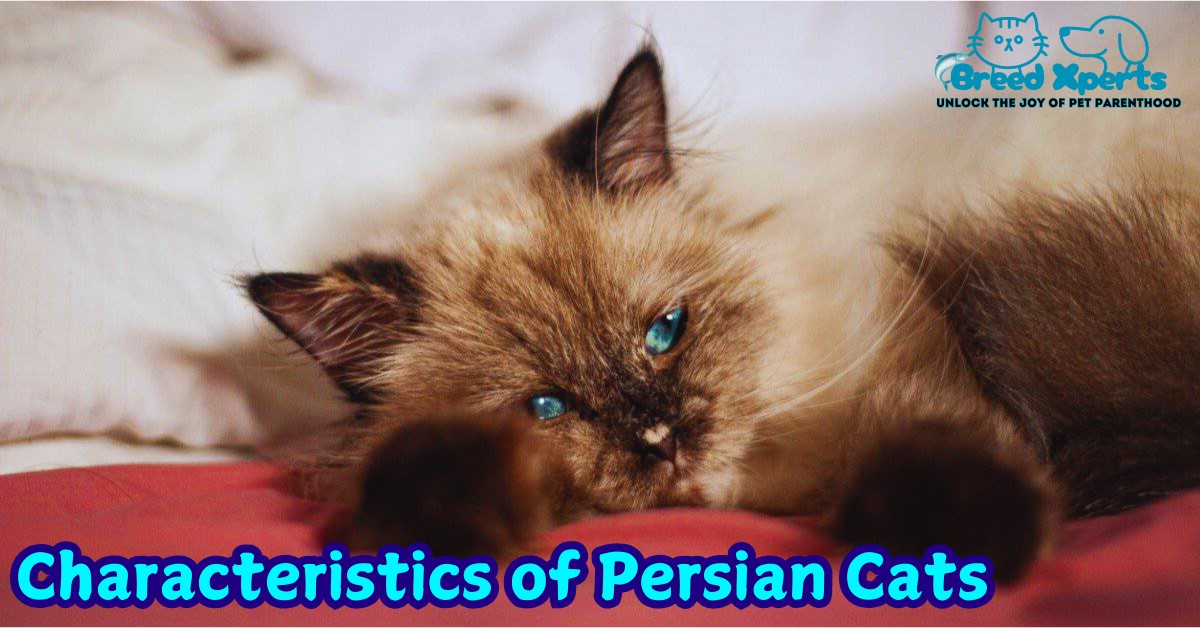
Characteristics
The appearance of Persian cats is unique, characterized by smooth fur that falls long, round faces, and large eyes. Various colors of Persian cats exist; white, black, blue, and gold are named among them. Compact legs with strong bodies do not denote less graceful but refined.
These cats have a calm and gentle nature. They love quiet surroundings and like being close to their owners. Unlike energetic breeds, Persians prefer lying down instead of jumping or climbing. They are affectionate but not overly clingy, which makes them great companions.
Persians are reserved and soft-spoken, having a sweet, mild meow. They require daily brushing to keep their fur without tangles. Their flat faces can cause respiratory and eye problems, making regular care a must. If cared for and loved, they become great companions.
Behavior and Temperament
Persian cats are characterized by a calm and gentle nature. They like quiet conditions and hate noisy situations or messes. They do not feel the urge to race and love getting spoiled and comforted. They love passionately but not too clingy, so they would suit houses that want a calm scene.
These cats prefer staying close to their owners and often follow them from one room to another. They appreciate soft beds, cozy places to curl up, and soft caresses. Persians are not very lively or energetic but enjoy short plays with their favorite toys. They also have a good relationship with other calm animals.
Persians are quiet soft-mouthing animals and rarely cry for attention. They love to give gentle blinking and light touches of affection. Given proper attention and affection, they become devoted and tender family pets who prefer a laid-back easy-going style of life.
Housing
Persian cats need a quiet and warm indoor setting to feel safe and comfortable. They prefer soft bedding, cozy nooks, and warm settings. Because of their long fur, which makes them vulnerable to extreme weather conditions, they should be kept indoors to avoid exposure to heat or cold.
These cats prefer quiet areas with low activity where they can relax comfortably. A house with plush rugs, feline sleeping spots, and scratching trees is ideal for them. Unlike some cats, Persians do not like climbing up high and instead prefer resting places at floor level rather than on high cat trees.
Keeping a Persian cat indoors protects them from dirt, diseases, and accidents. Their living spaces should be clean, quiet, and well-ventilated. In a warm home and with proper care, Persians have a happy and pampered life as beloved pets.
Substrate
Persian cats need a soft and cozy surface to lay on both their bedding and litter. Their favorite sleeping places are fluffy blankets, comfortable cat beds, or soft pillows where they can sleep soundly. Their sensitive paws require a soft and warm surface that makes them feel secure and happy.
For litter, Persians do well with soft, fine clumping litter that is gentle on their paws. Dust-free, unscented litter is best since their flat faces make them sensitive to strong odors and dust. A shallow litter box allows them to get in and out easily.
Their bedding and litter space has to be clean and fresh for them. Bedding inside the litter box needs to be replaced often, and the litter box must be cleaned daily. If this is done, the Persian cat will have a happy and peaceful life.
Breed History
The Persian cat has one of the longest histories with regards to renowned breeds. First bred in Persia, (now Iran) the breed features lengthy, shiny coats. When the 1600s presented, traders started to bring back these beautiful creatures to Europe to popularize themselves.
In the 19th century, Persians became quite popular with nobles and royal families. Queen Victoria of England also had Persian cats, which boosted their popularity. Breeders improved their characteristics, developing the flat-faced (peke-faced) type observed today.
Persians are among the most loved feline breeds worldwide. Elegant in their appearance and gentle as pets, they are a favorite choice for cat lovers. Although they have changed with time in terms of their looks, they are an epitome of elegance and love.

Training and Care
Training:
Persian Cats are intelligent pets but less tractable than several breeds. In terms of picking up information, they thrive well at the calm yet understandingly designed instruction. A Persian cat becomes very easy in terms of going through training to litter and usually not such a dirty one, especially to go with it when having a litter in the tray using low-depth with soft-dust litter inside.
You can also train simple behaviors, for instance, use a scratching post and not the furniture. Training on a reward system with soothing words and rewards works very well. However, Persians are relatively less active dogs, meaning they tend to respond less to complicated tricks or commands compared to dogs.
Care:
Persians need to be groomed every day to keep their long coat silky and to avoid tangles. They must be bathed monthly, and their tear-stained eyes should be wiped regularly and their ears cleaned. Balanced diet, routine visits to the vet, and a peaceful environment will make for a healthy and happy Persian cat.
Health Problems
Persian cats are beautiful but prone to health problems because of their flat faces and long fur. They suffer from respiratory problems often because of their small noses. Their eyes often run, and if not cleaned regularly, they can cause tear stains and infections.
In addition, PKD is inherited illness that sometimes brings about a premature failure of their kidneys. Scheduled veterinary exams keep diseases early stage. These felines, besides all above could suffer dental troubles as well; thus their teething need be brushed, or they shall appreciate dental chewing candies.
Persians are also obese because they do not move much. A well-balanced diet and control of portion size helps them maintain their weight. Persian cats, if groomed properly, visited by veterinarians regularly, and fed well, live a long life.
Appearance
The Persian cat is characterized by long, thick fur and round face. The Persian coat is shiny, rich, and dense, making them look fluffy and elegant. They come in several colors, including white, black, and gold, with patterns.
They have large, expressive eyes that could be blue, green, or copper. The broad face and short snout make them easily distinguishable from other breeds. They have small ears and a broad, compact body that completes their unique appearance.
Persians have sturdy, middle-sized bodies with short legs and a broad chest. They are large cats, but not very active and like to rest. Their beautiful appearance and gentle nature make them one of the most beloved breeds worldwide.
Predators
Persian cats are pets for indoors. They have a docile and gentle nature and therefore will become an easy target to wild predators, even for large cars, when let outdoors. This makes them stay indoors only.
While they are not hunting animals like many other cats, a small bird or rodent could be a threat outdoors. Persian cats, lacking the instincts of more energetic breeds, do not instinctively defend themselves as much.
To protect them from any danger, it is necessary to provide them with a safe environment. Keep windows and doors closed and never leave a Persian cat out in the open and unattended. It will ensure that they are safe from any possible threat.
Population
The population of Persian cats is vast and spread all over the world. They are among the most popular cat breeds, admired for their beauty and friendly character. Many people like to keep them as pets, which in turn increases their population steadily.
Persian cats are widely popular in countries like the United States, the UK, and Europe. They are often kept at homes as well as in cat exhibitions where the population admires their rich fur coats and affectionate characters.
Persian cats are often bred because responsible breeders are concerned with maintaining healthy bloodlines. However, the popularity of the breed has led to concerns over potential health issues. Still, the Persian cat population continues to thrive due to their appeal and beauty.
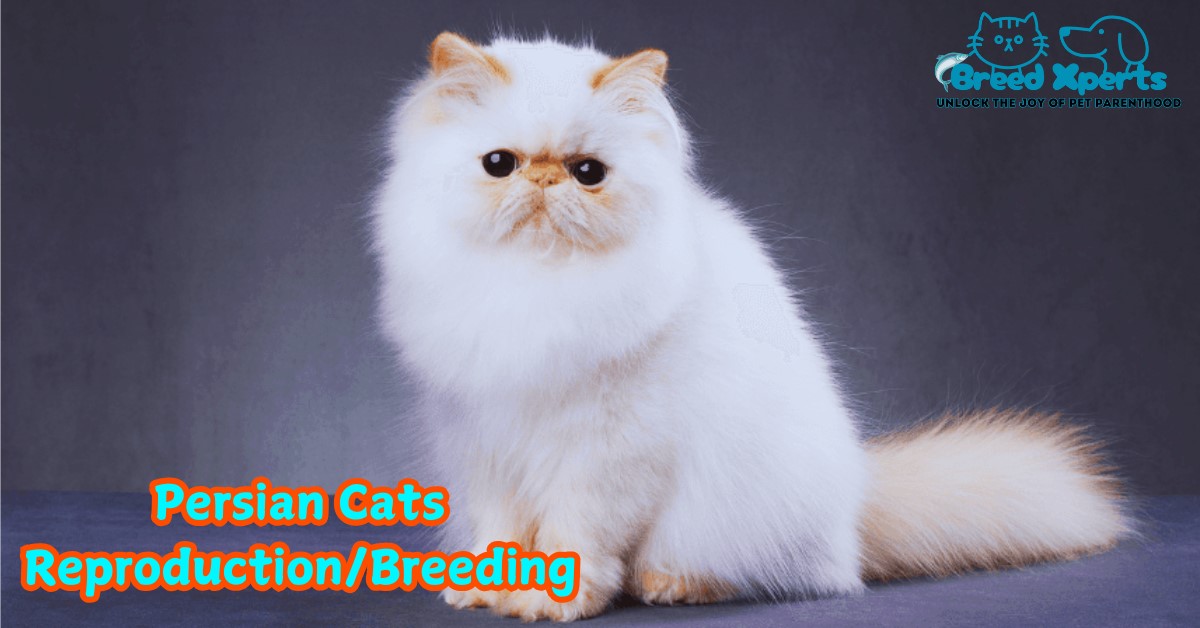
Reproduction/Breeding
The preparation required for the breeding of Persian cats is strict due to the characteristics of the breed. Breeding Persian cats requires responsible breeding for maintaining health and looks in the breed. In general, breeding occurs once both the male and female are mature, often at the age of 1-2 years.
The breeding process can be challenging for Persian cats because of their flat faces, which can lead to breathing difficulties during pregnancy or delivery. C-sections may be needed on occasion, particularly if the kitten is big or the mother experiences difficulties.
During breeding, Persian cats must only be bred with healthy individuals to avoid genetic diseases. Evaluation for polycystic kidney disease (PKD) and heart problems must be conducted before breeding. Consistent breeding aimed at improving the health and well-being of kittens and the dam is a necessity.
Further Research
More researches in Persian cats are necessary to know their health and welfare. Genetic characteristics that have been maintained, for instance flat face, continue to be studied for ways to prevent the overall health issues associated with them such as breathing difficulties and eye conditions.
The researchers are also trying new therapies that will help people in genetic diseases like PKD or polycystic kidney disease. It will help the breeders and owners to manage the Persian cat with better care. In addition, the studies regarding their food and nutrition could improve feeding and help avoid obesity and related conditions.
Studies must continue. Specialists will develop ways to improve the well-being of Persian cats. Health check-ups, better therapies, and new breeding techniques will be used to ensure that such beloved cats enjoy a long time of healthy, happy life.
Interesting Facts
Persian cats are known for their lavish fur and round faces. One interesting fact is that their long fur has to be brushed daily to prevent knots and mats. Despite the appearance of being fluffy, they are known for their calm and gentle nature.
Another fascinating fact is that royalty used to keep Persians, especially in Europe. Queen Victoria of England loved Persian cats so much that their popularity increased after that. Today, they are counted among one of the most loved cat breeds around the world.
Despite the reputation of laziness, Persian cats still enjoy short play sessions. They are affectionate and loyal, often following their masters. Their friendly, pleasant nature makes them ideal companions for both families and single people.
Pros & Cons as a Pet
Pros:
- Gentle and Affectionate:
Persian cats are famous for their calm and friendly temperament. They like being in close contact with owners and often receive the nick “lap cat”. - Beautiful Appearance:
With long luxurious fur and huge expressive eyes, they represent some of the most beautiful and aesthetic cat breeds. - Low Energy:
Persian cats are so sedentary that they seem to be good for low-key people. They love lounging and relaxing on comfortable places. - Quiet Nature:
They are peaceful and soft to talk to most of the times, thus make great companions when one is after a calm and quiet life.
Cons:
- High Grooming Needs:
Due to thick fur, the Persian cats will need brushing everyday to avoid mats and tangling. Otherwise their fur may develop into mat quickly. - Health Issues:
Persian cats suffer from respiratory conditions due to their flat face and inherited conditions such as PKD (polycystic kidney disease). - Not Very Playful:
They are not active cats, nor do they like energetic play or exercise. This might not be a good thing for families with kids who like playing around. - Expensive:
Persian cats can be very expensive to buy and keep in mind all their grooming, health care, and food.
Conclusion
To sum it up, Persian cats are wonderful companions due to their gentle nature and sweet personality as well as fabulous looks. Nevertheless, they demand full grooming and may have health issues due to their flat noses. As they seem calm and peaceful, they do not have much playfulness, which suits people looking for a low-energy pet. Properly cared for, they may live long happy lives and be contented, loving companions.
FAQ:
Is Persian cat expensive?
Savannah, Bengal, and Persian are considered the most expensive cat breeds. Expensive cat breeds are mostly prized for their rare genetics, striking appearance, and unique traits.
What is the no. 1 cat breed?
The Ragdoll
Ragdoll is a great breed of cat that, for several years, has held the top place in the choice of Americans. They are docile and sweet, so the Ragdoll fits perfectly into any home.
Is a Persian cat a good pet?
Generally, Persian cats are known as affectionate and social pets. They tend to be extremely loving and devoted cats, and they love to keep company with humans. Generally speaking, Persian cats are extremely amiable and behave well with others. Persian cats are beautiful cats and usually really easy to maintain.
Do Persian cats need AC?
You’ll find in both animals that the breeds with the shorter snouts get hot pretty quickly. Examples would be bulldogs, pugs, and Persian felines. It’s because of their reduced ability to pant. Therefore, those specific animals could benefit from air conditioning.
What is the most expensive cat?
Top 6 Most Expensive Cat Breeds In The World
- Ashera Cat. Up to $125,000.
- Savannah Cat. $ 12000-$ $50000.
- Khao Manee Cat. $7000–$11,000.
- Bengal Cat. $1800–$3000.
- Scottish Fold Cat. $800–$2000.
- Siberian Forest Cat. $600 –$2000.
Do Persian cats live long?
Sure, please go ahead and share with me the text you would like to have paraphrased in Persian. This adorable and cute Persian cat usually lives between 15 and 20 years. Though they look serene and still, it is in reality an affectionate creature that likes to curl up with its lovely companions.
What is the cheapest cat?
- Manx $500 to $800.
- Himalayan $300.
- Cornish Rex $100.
- Oriental Shorthair $400 to $500.
- Havana Brown $300 to $1,500.
- Snowshoe $200 to $250.
- Domestic Shorthair <$50.
Which cat is best for home?
Cat Breeds That Do Exceptionally Well As House Cats
- Sphynx. Often referred to as the ‘Velcro cat,’ this breed loves to stick to their owner’s sides (or curl up in their laps.)
- Ragdoll.
- Burmese.
- Scottish Fold.
- British Shorthair.
- Himalayan.
- Persian.
- Devon Rex.
What is the 1 rarest cat?
Sokoke Cat
Sokoke Feline. The Sokoke Cat is considered the most uncommon domestic cat breed globally, as per the UK’s Governing Council of the Cat Fancy (GCCF).
Is lion also a cat?
Lion, (Panthera leo), a sizable, robustly constructed feline (family Felidae) that ranks second in size after the tiger; it is a well-known apex predator (which implies it has no natural enemies or predators). The iconic “king of beasts,” the lion has been among the most recognized wild creatures since ancient times.


